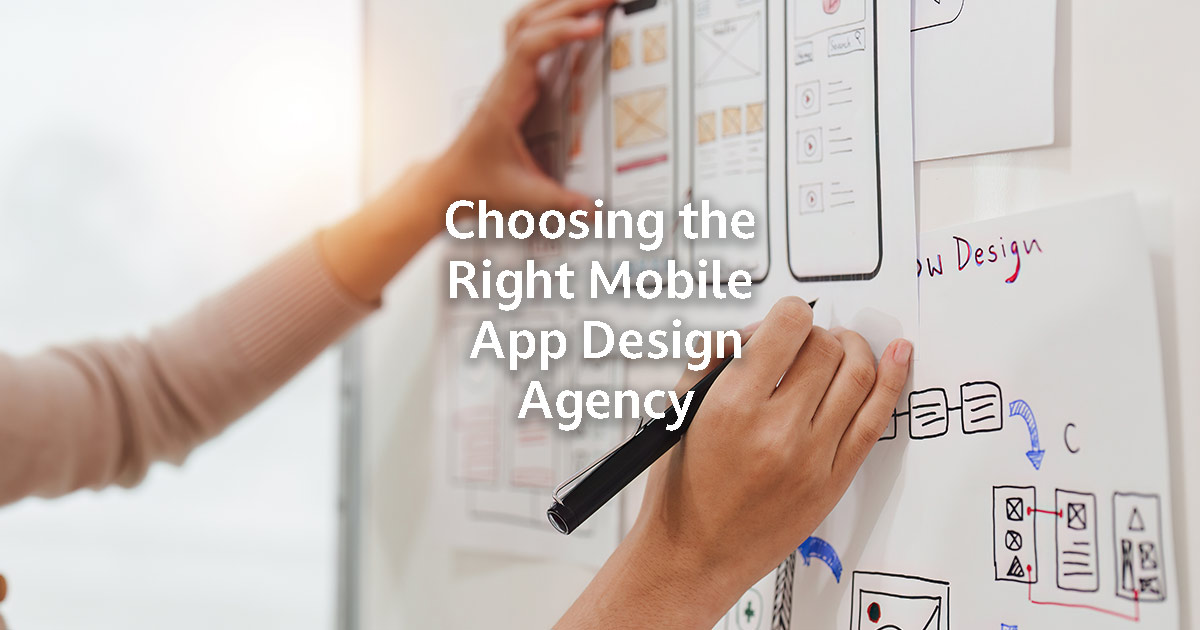A well-built app can boost engagement, drive loyalty, and open up new revenue streams. But how do you make sure it’s built right for a successful mobile app?
That’s where Growth-Driven Design (GDD) comes in. GDD is not about getting the first iteration (MVP) perfect! The reality is that no software, app or website is ever perfect! GDD is all about starting smart, learning fast, and improving constantly. There’s no “set and forget” builds here—just ongoing improvement and growth, backed by real data.
Know Your Audience. Build for Them.
You can’t build something great if you don’t know who it’s for. Understanding your users—and what they want—is the foundation. From there, it’s about making sure every tap, swipe, and screen feels effortless.
Great performance isn’t just nice. It’s essential. People drop apps that don’t deliver. Fast.
So, your app needs to work hard for your business and even harder for your users.
Why Mobile Apps Matter More Than Ever
In a fast-paced digital world, mobile apps are your direct link to customers. They’re personal, always-on, and can build serious brand loyalty.
Done well, apps:
- Improve customer experience
- Boost visibility
- Unlock new ways to earn
Plus, the data can you collect? That’s Gold… Priceless Gold! That’s not in a creepy way either. You need to collect the data ethically and use it wisely. Data helps you continually evolve and build on your user experience (UX). It helps you tailor offers, fine-tune the experience, and make smarter decisions.
Growth-Driven Design: Build, Learn, Grow
The traditional design process for websites, apps and software is broken! Forget the old-school way of building apps. Growth-Driven Design (GDD) is where it’s at. Nothing is ever going to launch perfectly, at the pace the digital world moves. Taking 3-6 (or more) months to launch is costly, because so much will change over that time. It’s a bloody competitive landscape so launch fast and improve based on real live user data, instead of building based on assumptions!
Here’s why it works:
- You start with what matters most.
- You improve constantly, based on real user feedback.
- You reduce risk—no big upfront bets.
Don’t get me wrong, you still need to launch a solid product – there are no shortcuts – with apps and software, there are also (often) no second chances. Therefore, a delicate balance of UX/UI Design and understanding your user’s needs at a base level is crucial.
If you can find this balance, it’s user-focused, data-backed, and flexible. You’re not guessing what people want—you’re building what they actually need.
Connect Your Business Goals to App Features
If your app doesn’t serve your goals, why bother?
Start by asking: What do we want to achieve? More sales? Better support? Higher retention?
Then make sure every feature supports that. Keep it focused. Keep it aligned.
User Experience Isn’t Optional—It’s Everything when creating a successful mobile app
As mentioned before, the app still needs to work for people. If your app is hard to use, it’s not going to last long on anyone’s phone.
The design should guide users, not confuse them. It should look great, but more importantly, work great.
Make it intuitive. Make it responsive. And always—always—test it on different devices.
And remember, the work doesn’t stop after launch. Keep improving.
Native, Hybrid, or Web? What’s Right for You?
You’ve got options. Each with pros and cons.
- Native Apps: Best performance, best experience—but they’ll cost you more to build and maintain.
- Hybrid Apps: Faster to market, more cost-effective, and you can hit multiple platforms at once.
- Web Apps: Budget-friendly and easy to update, but they won’t have that same “native feel.”
It comes down to your goals, your budget, and how quickly you want to move.
Know the Market. Know the Competition.
Before you dive in, do the homework.
What do your users want? What are your competitors offering?
Find the gaps. Then make sure your app stands out.
Watch the trends too—staying relevant means staying informed.
The App Development Journey: From Idea to Reality
It all starts with an IDEA. Literally.
We use our I.D.E.A. framework—Imagine, Design, Execute, Amplify—to guide the entire app development process. It’s about starting smart, building efficiently, and setting things up for continuous growth.
1. I = IMAGINE
This is where it all begins.
- What’s the big idea?
What problem are you solving? What opportunity are you tapping into? Get crystal clear on the app’s purpose and the value it delivers to your users. - What’s the plan to bring it to life?
We map out the strategy. This includes understanding your target audience, defining your business goals, and setting clear objectives for the app. - What’s your Minimum Viable Product (MVP)?
You don’t need to build everything all at once. Start with the essentials—the core features that get you to market quickly and deliver real value from day one. We focus on launching fast, learning fast, and growing smarter.
2. D = DESIGN
Now we bring it to life visually.
- User Experience (UX)
We craft the journey your users will take. Every screen, every interaction—it all needs to feel intuitive and seamless. Great UX keeps people coming back. - User Interface (UI)
It’s got to look good too. The design should reflect your brand and resonate with your users. Clean, modern, and engaging. - Prototyping & Feedback
Before we build, we test the design with real users. What works? What doesn’t? This step saves time and money down the track.
3. E = EXECUTE
Here’s where the real building happens.
- Development
We turn the designs into a working app. Whether it’s native, hybrid, or web—we choose the right tech to suit your goals. - Testing
No one likes buggy apps. We rigorously test for performance, usability, and security to make sure everything runs smoothly. - Launch
Ready to go? We help you roll out your app to the world—with a plan to maximise visibility and adoption from day one.
4. A = AMPLIFY
This is where most stop—but not us.
- Analytics & Reporting
What gets measured gets improved. We track key metrics—downloads, engagement, retention—so you always know how your app is performing. - Continuous Improvement
The launch is just the start. We monitor, learn, and adapt. Using real user data and feedback, we fine-tune features, fix what’s not working, and double down on what is. - Add New Features
As your users grow, so do their needs. We plan for future updates that keep your app relevant, competitive, and useful. - Marketing & User Engagement
Amplify also means getting your app in front of the right people. From ASO (App Store Optimisation) to targeted marketing campaigns—we help you grow your user base.
Plan smart. Work with a good team. And have a solid launch strategy.
Agile and Iterative: Move Fast. Learn Faster.
Agile isn’t just a buzzword—it’s a sound development method. And, it’s how you build successful mobile apps.
Small releases. Quick feedback. Constant tweaks.
It’s flexible. It’s collaborative. And it keeps you moving in the right direction.
Keep It Safe. Keep It Legal.
Earlier in the article, we spoke about data and the importance of collecting and using it ethically. Your users trust you with their data. Don’t let them down.
Use strong security. Encrypt everything. And make sure your app complies with the law—privacy policies, terms, all of it.
If you need to, get expert advice around the privacy act in NZ. It’s worth it.
Get Your Mobile App Seen: Marketing That Works
You’ve built it. Now let people know.
- Nail your value proposition.
- Use social to create hype.
- Work with influencers to spread the word.
- Optimise your app store listing (ASO).
Marketing isn’t an afterthought—it’s part of the plan. You should cover this off in the IMAGINE piece of our IDEA framework
After Launch: Keep Improving
Launch day isn’t the finish line, as mentioned above. It’s just the start. This is where you begin to Amplify your MVP, and start to turn it into a successful mobile app!
Track your metrics. Listen to your users. Update regularly.
- What’s working?
- What’s not?
- What’s next?
Keep asking these. Keep growing.
Data + Feedback = Better Apps
Data tells you what’s happening. Feedback tells you why.
Together, they show you where to go next.
Use them. Don’t guess.
Updates Show You Care
Regular updates keep your app fresh. They show users you’re paying attention.
New features. Bug fixes. Security patches. It all matters.
Stay responsive. Stay relevant.
Find the Right Team. Build Something Great.
When developing a Successful Mobile App, the right app development partner makes all the difference.
You want a team that gets your vision, brings the skills, and is with you for the long haul.
Collaboration is key. Communication is everything.
With the right crew, and the right methodology (Growth-Driven that is 😉) your app won’t just launch—it’ll thrive.









